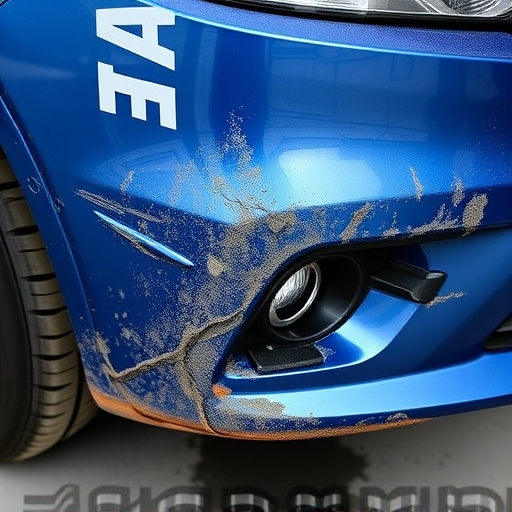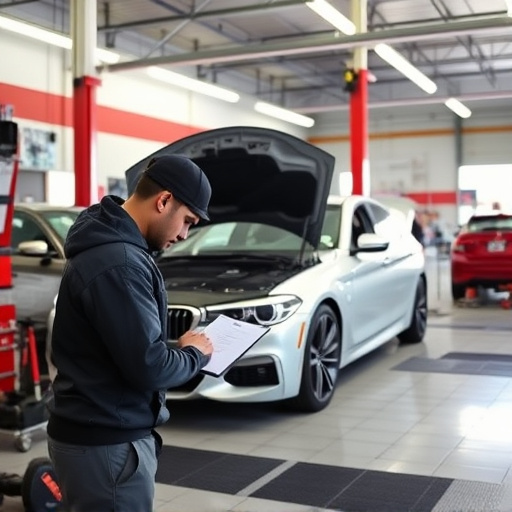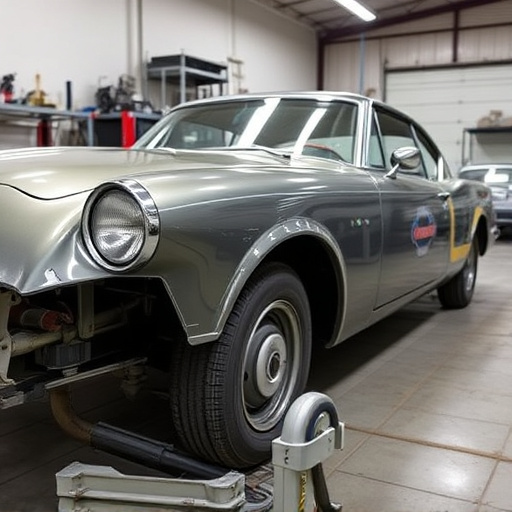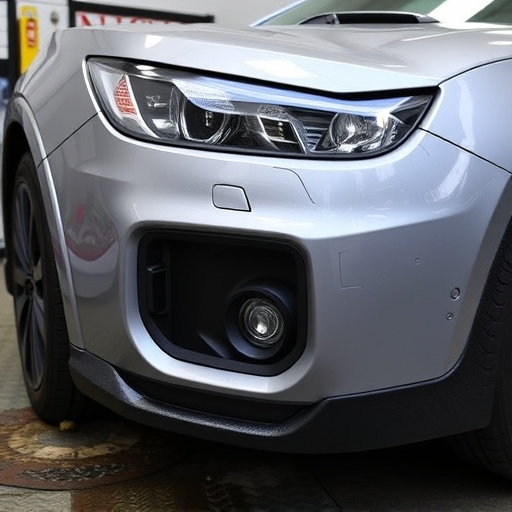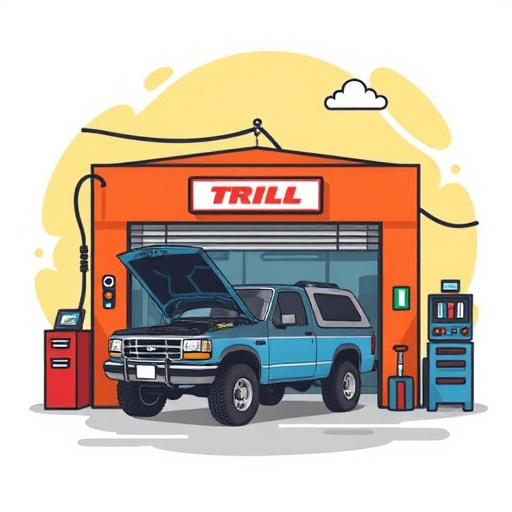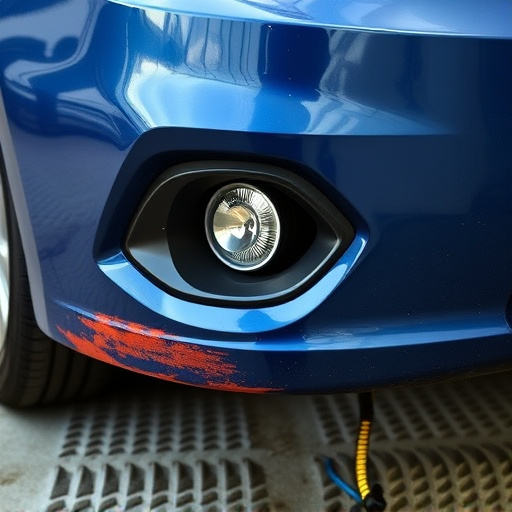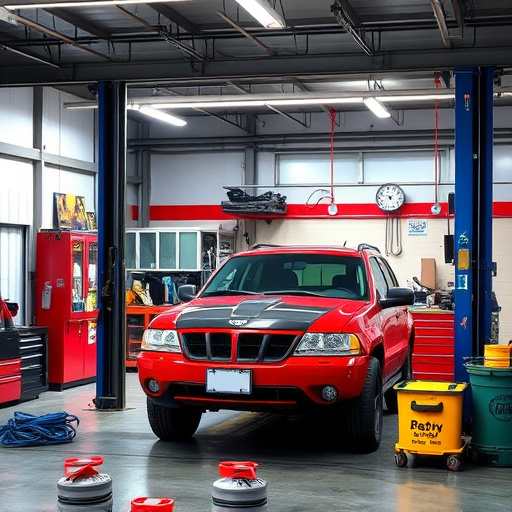Selecting a comprehensive training program for auto body technicians involves courses covering structural repair, modern painting techniques, and advanced technology specific to recent vehicle models. This holistic approach combines practical skills (e.g., paint repair methods) with theoretical knowledge (color theory, environmental considerations), preparing technicians to restore vehicles to pre-accident condition while considering sustainability. Core topics include metalworking, measuring, vehicle construction understanding, hands-on structural repairs, specialized equipment operation, aesthetics like paintless dent repair, and proficiency in vehicle maintenance and diagnostic practices. Ultimately, these programs equip auto body technicians with versatile skill sets for exceptional repairs, enhancing customer satisfaction and professional growth.
Training programs play a pivotal role in shaping skilled auto body technicians, ensuring they possess the knowledge and expertise needed to excel in their field. This article delves into the essential components of comprehensive training for auto body repair professionals. We explore how selecting well-rounded programs covering all aspects of auto body work is crucial. Additionally, we emphasize the value of hands-on experience, real-world simulations, and mentorship for practical learning. Lastly, we discuss the importance of continuous learning to keep up with industry advancements and technological changes in the automotive sector.
- Selecting Comprehensive Training Programs
- – Importance of choosing a program that covers all aspects of auto body repair and restoration
- – Key skills and modules to be included in an ideal training curriculum
Selecting Comprehensive Training Programs

When selecting comprehensive training programs for auto body technicians, it’s crucial to consider courses that cover a wide range of skills essential for excellence in car body shop repairs and auto collision repair. The ideal program should include modules on structural repair, painting techniques, and advanced technology specific to modern vehicle models. This ensures that the technicians are equipped with the latest knowledge and tools required in today’s highly specialized automotive industry.
Focusing on both practical skills and theoretical understanding is key. Hands-on training in car paint repair methods, for instance, allows students to develop proficiency in various techniques such as blending, color matching, and applying finishes. Simultaneously, classroom sessions should delve into the science behind materials, color theory, and environmental considerations related to auto collision repair. This holistic approach guarantees that aspiring auto body technicians become adept at both repairing and restoring vehicle bodies to their pre-accident condition while adhering to sustainable practices.
– Importance of choosing a program that covers all aspects of auto body repair and restoration
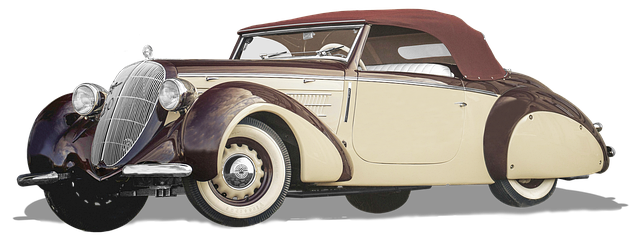
Choosing a comprehensive training program is paramount for aspiring auto body technicians to excel in their craft. A well-rounded curriculum that covers the entirety of auto body repair and restoration equips students with the versatile skill set required to tackle diverse challenges in the field. This includes not only mastering structural repairs, such as frame straightening and panel replacement, but also delving into refinishing techniques like painting, priming, and clear coating. By embracing a holistic approach, trainees gain proficiency in both practical applications and theoretical knowledge, enabling them to navigate complex auto body scenarios with confidence.
Such programs often include specialized modules on various aspects like bumper repair, car scratch repair, and other body shop services. This versatility not only broadens the technician’s service offerings but also enhances their problem-solving abilities. Ultimately, a robust training foundation paves the way for auto body technicians to deliver exceptional repairs, ensuring customer satisfaction and fostering their professional growth in this dynamic industry.
– Key skills and modules to be included in an ideal training curriculum

An ideal training program for aspiring auto body technicians should encompass a comprehensive range of skills and modules. Core subjects include advanced metalworking techniques, precision measuring and cutting tools, and an in-depth understanding of modern vehicle construction. Hands-on training in structural repair, panel replacement, and frame straightening is vital, along with expert guidance on using specialized equipment like hydraulic presses and robotic welding machines.
Additionally, the curriculum should delve into aesthetics and surface restoration, teaching techniques such as paintless dent repair, a sought-after skill in modern auto body shops. Students must also gain proficiency in vehicle maintenance practices to ensure they can diagnose and address pre-existing issues. Knowledge of various types of vehicle paints and repair processes, including advanced color matching and blending techniques, is crucial for mastering the art of auto body restoration.
Training programs play a pivotal role in shaping skilled auto body technicians. By selecting comprehensive courses that cover all facets of auto body repair and restoration, aspiring professionals can acquire the diverse skills needed to excel in this field. These programs should include modules on welding, painting, panel replacement, and advanced techniques to ensure graduates are well-prepared to meet the demands of modern automotive industry standards. Investing in quality training is key to fostering a competent workforce of auto body technicians capable of delivering top-notch repairs and restorations.

